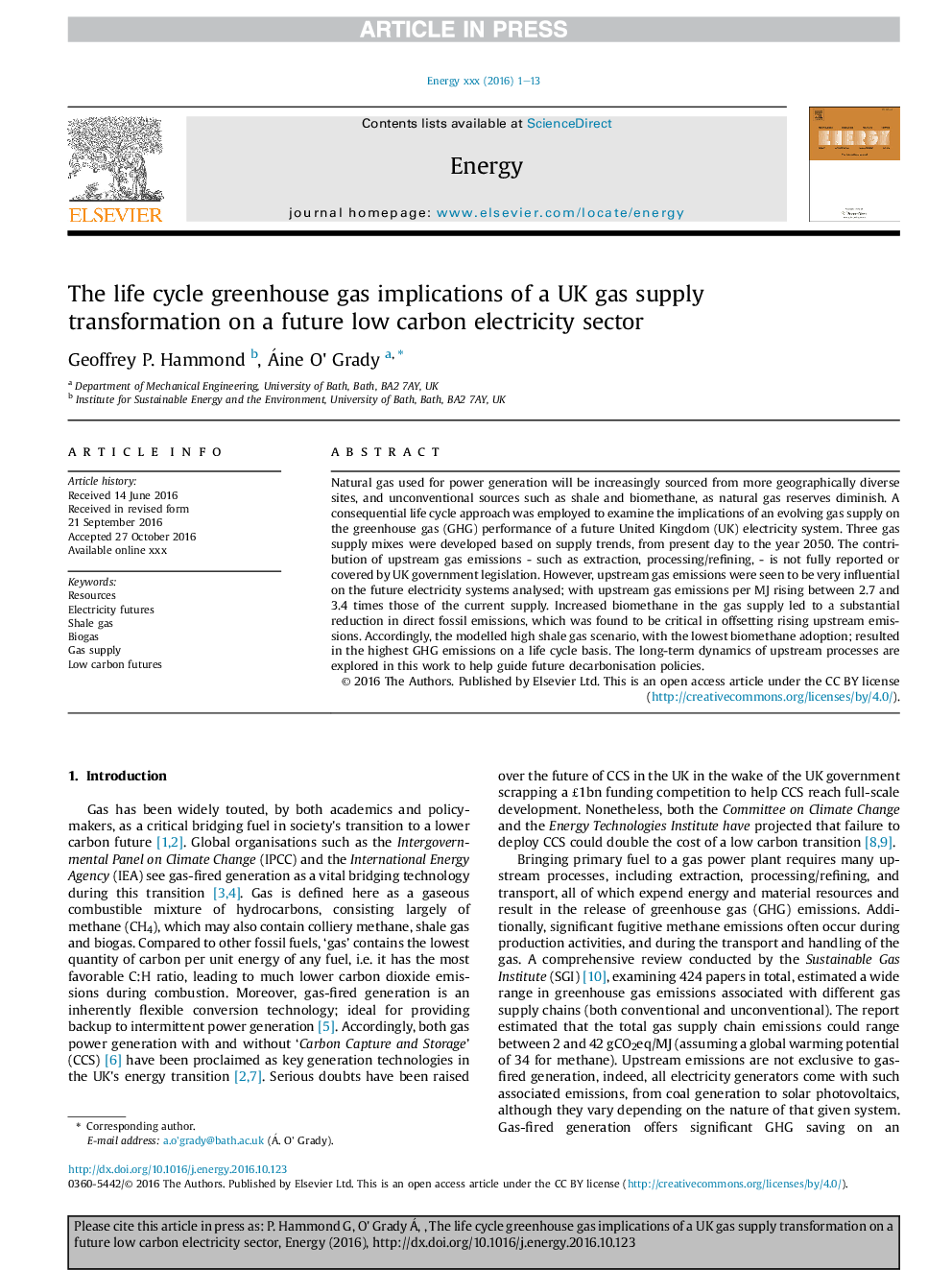| Article ID | Journal | Published Year | Pages | File Type |
|---|---|---|---|---|
| 5477115 | Energy | 2017 | 13 Pages |
Abstract
Natural gas used for power generation will be increasingly sourced from more geographically diverse sites, and unconventional sources such as shale and biomethane, as natural gas reserves diminish. A consequential life cycle approach was employed to examine the implications of an evolving gas supply on the greenhouse gas (GHG) performance of a future United Kingdom (UK) electricity system. Three gas supply mixes were developed based on supply trends, from present day to the year 2050. The contribution of upstream gas emissions - such as extraction, processing/refining, - is not fully reported or covered by UK government legislation. However, upstream gas emissions were seen to be very influential on the future electricity systems analysed; with upstream gas emissions per MJ rising between 2.7 and 3.4 times those of the current supply. Increased biomethane in the gas supply led to a substantial reduction in direct fossil emissions, which was found to be critical in offsetting rising upstream emissions. Accordingly, the modelled high shale gas scenario, with the lowest biomethane adoption; resulted in the highest GHG emissions on a life cycle basis. The long-term dynamics of upstream processes are explored in this work to help guide future decarbonisation policies.
Related Topics
Physical Sciences and Engineering
Energy
Energy (General)
Authors
Geoffrey P. Hammond, Áine O' Grady,
